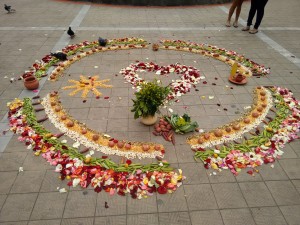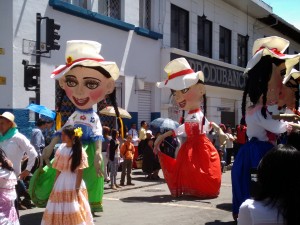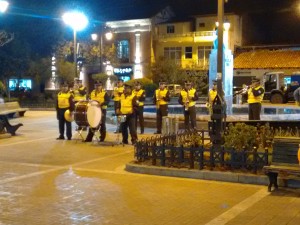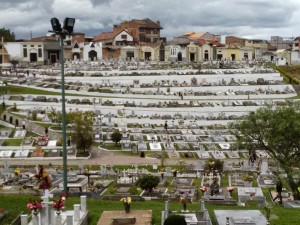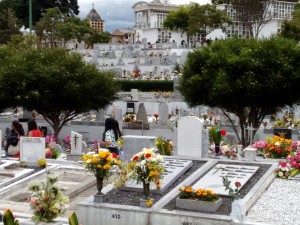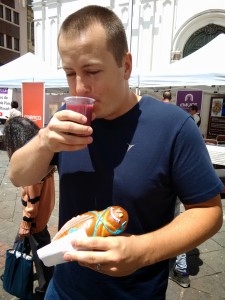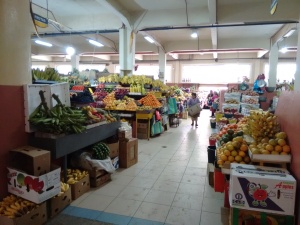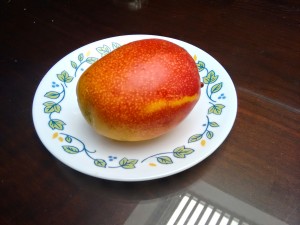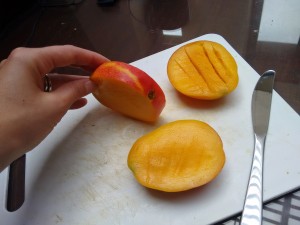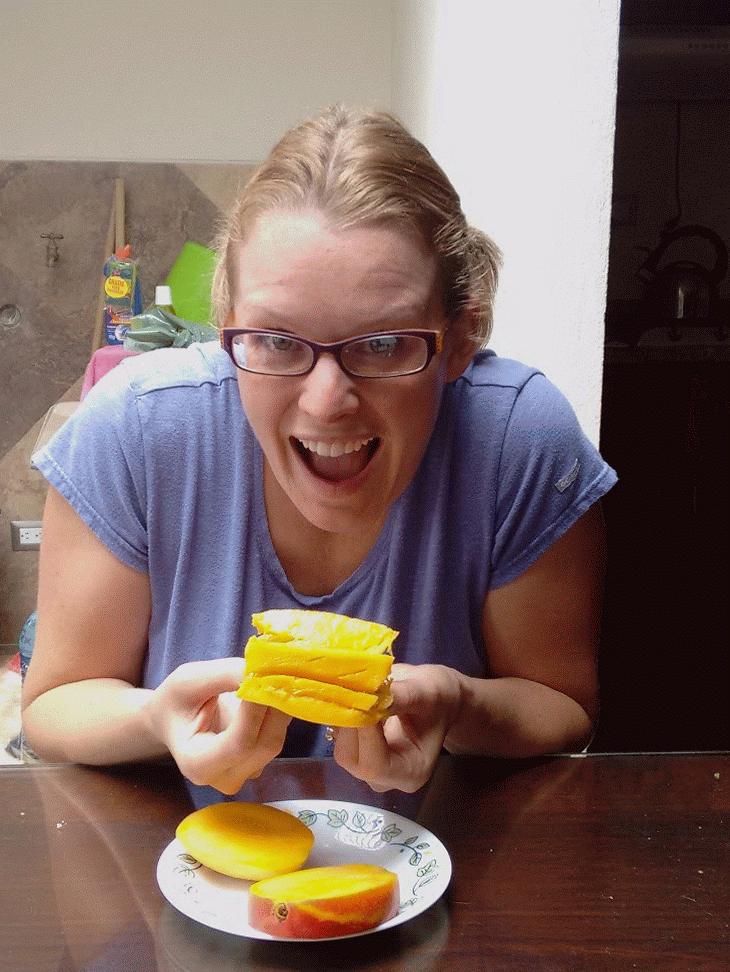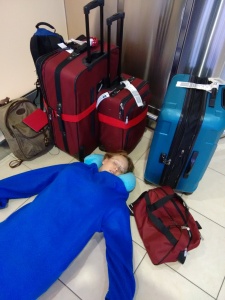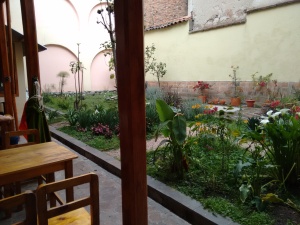There seem to be no speed limits in the city of Cuenca. However, the cobblestone streets help to limit the speed of moving vehicles, as does the congestion. When traffic is light, like at night, the speed of the moving vehicles greatly increases. There are also more one-way streets than not and stop lights at most intersections near the city center, at least on one side of the road. This, we’ve learned, has to do with right-hand turns. Pedestrians may however, cross on either side or anywhere in-between which means there are always people in the road and cars honking at them.
The driving scene here is loud. We wake up every morning to car horns and alarms. For some reason, car alarms are going off all day long, everywhere we go. People don’t really take notice. In many cases, the owner is sitting in the car listening to their music as it’s sounding off. Maybe an elderly couple is waiting patiently in the back seat. Whether from the alarms or from the horns themselves, the city is not especially quiet. Taxi’s stop at mid-intersection to pick someone up and the row of cars behind goes wild. The light turns red, the first car stops, pedestrians begin to walk, and the backed-up row of cars behind bleeps their horns with impatience. The first car does not move and the pedestrians do not look, but the horns sound their protests all the same. Inside the honking cars, the drivers maintain bored expressions and relaxed postures. Only their hand moves from the wheel to the horn and back.
Recent experience would show, however that riding in these cars is not nearly as relaxing as these drivers seem to be insinuating. Yesterday, Ryan and I walked over two miles to the biggest mall in Cuenca (Mall del Rio), which by the way has a pet store! It also has something very much like a multiple level Walmart called Coral Hipermercado where we finally found some food products to buy–snacks and water, mostly. With our hands full of goodies, we decided to hail a cab to take us back.
The demand for taxis in that area was high, so we had to be a little aggressive in order to get one. I ran up to one that had just stopped to unload passenger and the driver was nice. I’d reached the cab slightly before another man, and he told him I was first. At least I think that’s what he said because my competition vanished. When we climbed in, there were nothing to clip the seat belts into, so we both went without. I got car sick with all the sudden stops and starts, although my window did work, which definitely helped with the nausea. At one point the driver had to slam on the brakes and one of our huge water jugs lurched into the front between the two seats. We did however, reach our destination safely and it only cost $2.50 to drop us at the city center, which is only a few blocks from where we live.. It was a rather intense ride, but it sure beat walking another two miles carrying groceries. I would definitely do it again.

